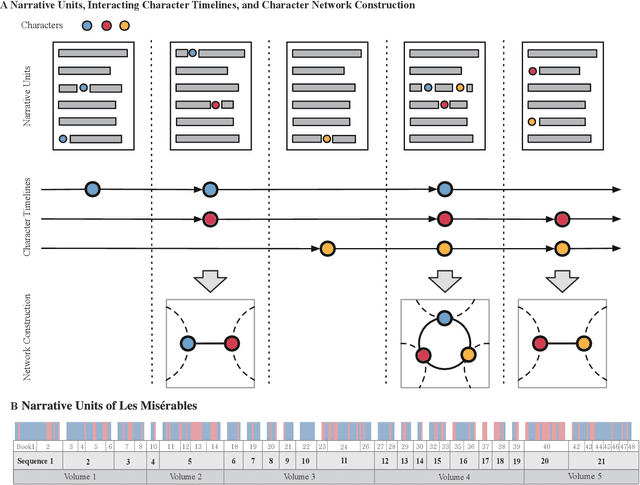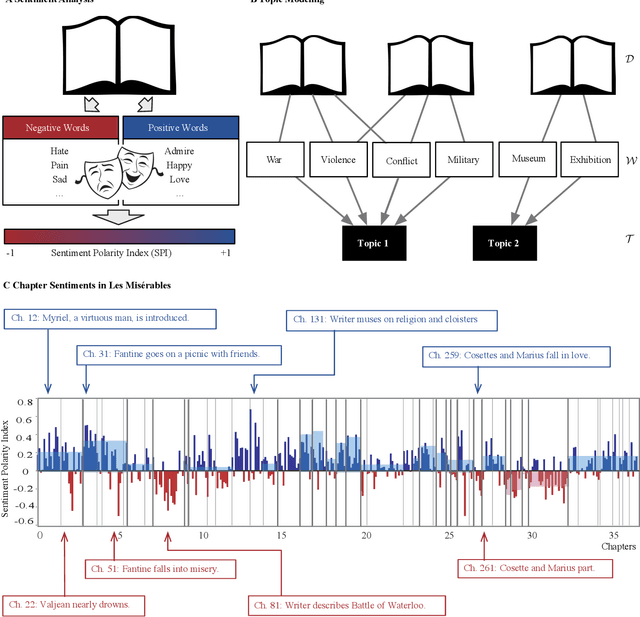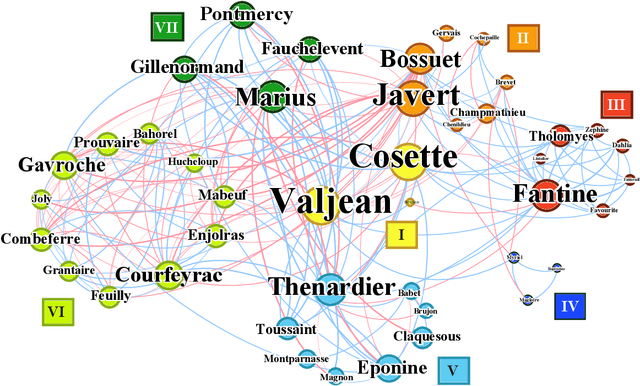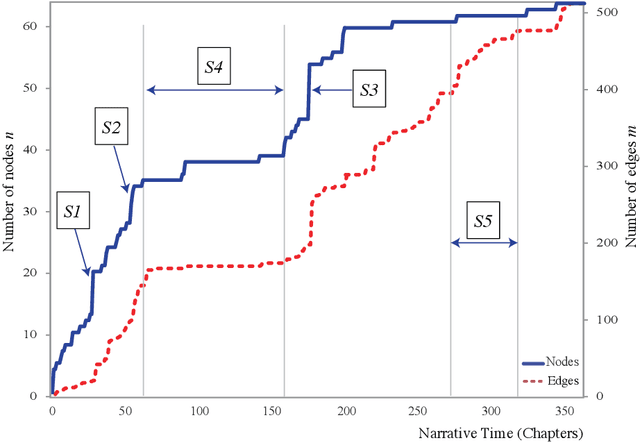Mapping Out Narrative Structures and Dynamics Using Networks and Textual Information
Paper and Code
Mar 24, 2016



Human communication is often executed in the form of a narrative, an account of connected events composed of characters, actions, and settings. A coherent narrative structure is therefore a requisite for a well-formulated narrative -- be it fictional or nonfictional -- for informative and effective communication, opening up the possibility of a deeper understanding of a narrative by studying its structural properties. In this paper we present a network-based framework for modeling and analyzing the structure of a narrative, which is further expanded by incorporating methods from computational linguistics to utilize the narrative text. Modeling a narrative as a dynamically unfolding system, we characterize its progression via the growth patterns of the character network, and use sentiment analysis and topic modeling to represent the actual content of the narrative in the form of interaction maps between characters with associated sentiment values and keywords. This is a network framework advanced beyond the simple occurrence-based one most often used until now, allowing one to utilize the unique characteristics of a given narrative to a high degree. Given the ubiquity and importance of narratives, such advanced network-based representation and analysis framework may lead to a more systematic modeling and understanding of narratives for social interactions, expression of human sentiments, and communication.
 Add to Chrome
Add to Chrome Add to Firefox
Add to Firefox Add to Edge
Add to Edge